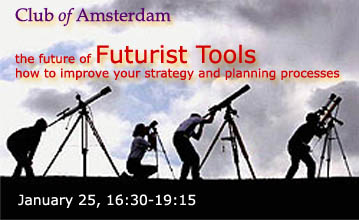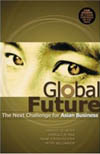
Asian Leadership in Trade and Associated Risks
Asian Leadership in Trade and Associated Risks
by Evalueserve
A Special Summit for the Future Report.
World Trade: Emergence of Asia
Asia’s journey from the 1997-98 financial crisis to being one of the world’s most dynamic regions in terms of trade, development and investment activity, can best be termed as a ‘Renaissance’. The world’s centre of economic gravity is shifting towards Asia, as it currently accounts for 27 percent of international trade. This growth is mainly driven by the exemplary performance of the emerging Asian countries, including China, India, Hong Kong, Thailand, Malaysia, Singapore and Vietnam. The share of these emerging Asian countries in world trade increased from 13 percent in 1990 to 20 percent in 2004.
The Asian region is gaining significance in merchandise as well as commercial services trade. Asia’s share in world merchandise exports and imports stands at 26.8 percent and 24 percent, respectively. The value of Asia’s merchandise exports and imports shot up by 25 percent and 27 percent, respectively, in 2004. The growth in exports from the region can be attributed to strong demand from the US, and intra-Asian trade, stoked by a recovery in electronics trade.
Exports of commercial services increased at a fast rate of 27 percent in 2004, while imports were up 25 percent during the same period. Asian countries, such as India, China and the Philippines, are the most preferred destination today for outsourcing of business services, such as transaction processing, customer care centers, medical transcription, IT services and application development, high-end analytical services, R&D services, etc. Other commercial services, such as transportation services were strong in 2004, while travel receipts recovered by 31 percent during the year from exceptionally low levels in 2003 (due to the spread of SARS).
Intra-regional trade as a share of total trade went up sharply to 41 percent in 2004, primarily due to intra-industry trade as a result of greater vertical specialisation and relocation of production processes. This is evident in the electronics sector, where capital intensive processes (like production of microchips) are carried out in high-income economies like Singapore and Korea, and labour intensive processes (like assembly of personal computers) are located in low income countries, such as China. Asia has integrated into a global production chain with some cities like Hong Kong and Singapore becoming the hub of manufacturing and trade.
The dynamics of growth and development in Asia is a perfect illustration of how countries have used trade as a means of achieving greater degree of integration with the international economy. Region-specific factors have provided the stimulus for this growth.
[…]
Risks to Trade in Asia
Including Chapters about:
- Asian economies being net importers of energy, will be hard hit by a rise in global oil prices
- Infrastructure gaps exist in growing nations in Asia
- Inflation and interest rate rise would aggravate debt servicing burden and discourage investments
- Exchange Rates volatility hinders private capital inflows
- Outsourcing business prone to information security risk
- Logistics bottleneck might inhibit outsourcing of manufacturing to Asia
- Epidemics can curtail the GDP growth of the region
- Ageing population in China, Japan and Singapore is a source of concern
- Cultural differences can prove to be detrimental to growth
- Terrorism can lead to decreased FDI, decline in tourism, fiscal imbalances and unemployment
- Asia is prone to various kinds of natural disasters
| However, despite the risks and challenges faced by the region, trade in Asia is yet to reach its full potential. The emerging Asian region is expected to grow 6.6% in 2006 according to ADB estimates. The recent acceleration in growth promises to propagate further restructuring and reforms, which would create rich opportunities for stimulating faster trade growth within the region. In order to boost the growth momentum, Asia has to ensure that appropriate measures are taken to eradicate the risks prevailing in the region through economic cooperation amongst the Asian countries and continued structural reforms within individual economies. Evalueserve is a Knowledge Partner of the Summit for the Future 2006 on Risk – May 3-5, 2006. |
News about the future of Trade in Asia

Vietnam Goes Global
by YaleGlobal
The government embraces capitalism, but so far only for small businesses
Although Vietnam had hoped to join the WTO before that body’s December ministerial meeting, an accession deal is not likely to finalized before mid-2006. Still, Vietnam’s eagerness to join the global trading system marks a noteworthy ideological shift for the ruling Communist Party, writes Jordan Ryan, the United Nations Development Program Representative in Hanoi. Vietnam’s Communist leaders once rejected capitalism, fearing that it would allow imperialist powers to maintain their hold over the country. Now the party has made trade and foreign investment a central part of its economic strategy. Vietnam’s re-integration into the world economy has proceeded at a breakneck pace, with exports of almost US$30 billion last year. Yet in its rush towards prosperity, concludes Ryan, the country must take care not to neglect its poorest citizens.

Japanese investment in Indonesia to double
The Indonesian government expects Japan’s investment and the value of export by Japanese companies in Indonesia to double in the coming five years.
“Up to 2009 Japan’s investment in Indonesia is expected to grow to US$22 billion or double its present investment,” Aburizal, Minister of the Economy said at a component market exhibition with participants including 44 Japanese businessmen.
He expressed optimism that the target of Japan’s investment will be met as the first-round negotiation between the Indonesian and Japanese governments on the Economic Partnership Agreement (EPA) has run smoothly.
There are some 900 Japanese companies operating in Indonesia today with total investment of US$11 billion, and job opportunities for about 282,000 people. Their export value is expected to double in the coming five years. Their export and import value now account for 19.06% and 13.07% of the total value of Indonesia’s export and import, respectively.
News about the future

Numenta is developing a new type of computer memory system modeled after the human neocortex. The applications of this technology are broad and can be applied to solve problems in computer vision, artificial intelligence, robotics and machine learning.
The Numenta technology, called Hierarchical Temporal Memory (HTM), is based on a theory of the neocortex described in Jeff Hawkins’ book entitled On Intelligence.

The flimsiest clock in the world
The Japanese watchmaker Citizen Watch Co. Ltd. created a flexible digital clock which is as thin as camera film and can be bent around the curve of a wall.
The clock, measuring 53 by 130 centimeters (21.2 by 52 inches), displays time in black numbers using technology developed by E Ink of the United States.
Next Event: Wednesday, January 25, 16:30-19:15

Wednesday, January 25, 2006
Registration: 16:00-16:30, Conference: 16:30-19:15
Where: PricewaterhouseCoopers, De Entree 201, 1101 HG Amsterdam Zuidoost, [next to the football stadium Arena]
WithMichael Jackson, Chairman, Shaping Tomorrow:
Business Futures in a Digital Age
Patrick Crehan, CEO and Founder, Crehan, Kusano & Associates, Director, Clubof Amsterdam:
George Pór, Founder, CommunityIntelligence Ltd.:
The New Wave of Futuring: Co-Sensing –> Co-Presencing –> Co-Creating
and our Moderator Buddy R. Kluin, Co-founder and lead strategist, Y-now
The convergence of gaming and broadcast
The convergence of gaming and broadcast
“Simply too beautiful”. This is how China’s usually conservative Internet Network Information Centre describes the numbers underpinning China’s online games market – and with good reason, even if the language is a little too sugary. With 2003 growth of at least 45 per cent and MMOGs (massive multiplayer online games) regularly attracting over 500,000 simultaneous players (numbers of over 1m are not uncommon), industry expectations indicate that China may become the world’s leading driver of online games before too long. China’s sports agencies have recognised online games as an official competitive sport, and market leading games publishers have recently listed on international stock markets.
The surge of energy and investment presently characterising China’s games industry is extending to other sectors of the country’s digital creative industries. In a climate of liberalisation with a sharpening focus on building commercial fundamentals across the board, China’s digital industries – TV, publishing, film, radio – are helping boost GDP growth as well as helping promote what one might call the ‘China brand’. As the industries expand, they are likely to be shaped by growing domestic interest in positioning China – Chinese design and creative talent and inspiration, Chinese content, Chinese language, Chinese technology, Chinese brands – both at home and abroad.
Just consider some more startling statistics: 2,000-plus TV channels, 400m TV homes and 100m cable homes; 31 film studios, 7,000 cinemas (54 digital – soon to be 100; I-Max describes China as its fastest growing market) and an expanding number of movie channels; 2,000 radio channels with rising advertising values driven by an upsurge in private car ownership (estimated 12m in 2003); close to 10,000 magazine titles and expanding book imports; and 13.8m online gamers, a figure which some say could rise to more than 40m by 2007.
[Source: China-Britain Business Council]
| 2000 | 2005 | 2010 | |
| Console Hardware | 4,791 | 3,894 | 5,771 |
| Console Software | 9,451 | 13,055 | 17,164 |
| Handheld Hardware | 1,945 | 3,855 | 1,715 |
| Handheld Software | 2,872 | 4,829 | 3,113 |
| PC Software | 5,077 | 4,313 | 2,955 |
| Broadband | 70 | 1,944 | 6,352 |
| Interactive TV | 81 | 786 | 3,037 |
| Mobile | 65 | 2,572 | 11,186 |
| Total | 24,352 | 35,248 | 51,292 |
Source: Informa Telecoms & Media
Adam Thomas, media research manager at Informa Telecoms & Media: “We are now talking about the games sector as a near-$60 billion business, which is an impressive number. But there are still some issues to be tackled. Broadband games are doing well, but will gain at the expense of the PC market which is in irreversible decline. The Interactive TV sector is still looking for a business model and there is also the issue of piracy to consider. We have calculated that the industry will lose $6.6 billion to piracy in 2005 and, if unchecked, that could rise to more than $9 billion in 2010.”
“In the United States, wireless games will experience the fastest growth rate, increasing from $281 million in 2004 to $2.1 billion in 2009, a 49.3 percent compount annual increase.”
“In EMEA, as in most other regions, the market for PC games will continue to deteriorate as a result of the migration to newer technologies. PC game sales are projected to decline from $771 million in 2004 to $655 million in 2009.”
“The video game market in Asia/Pacific, the largest market, at $10.1 billion in 2004, is projected to maintain it’s leadership, growing by 18.0 percent on a componund annual rate through 2009, reaching $23.1 billion.”
“Latin America is the only region to exhibit growth in the PC game market because of limited competition from the new technologies of online and wireless games.”
“Canada has one of the highest broadband penetration rates in the world, spurring growth in the online game segment.”
[Source: PricewaterhouseCoopers]
By 2010, worldwide games download revenues will have reached almost €7bn and there will be more than 2bn games enabled mobile handsets in the marketplace. More recently, Japan and Korea, traditionally the powerhouses of the mobile games industry, have now been overtaken by Europe and America in terms of mobile games revenues. This year, Europe and America will account for more than 50% of global revenues. [Source: Screen Digest]
Digital broadcast TV (DTV) combines the two best-selling consumer products in history – TVs and mobile phones. TV will be an ingredient that drives demand for the next generation of wireless mobile phones because consumers want both communications and entertainment – all in one place and in one device. It is currently assumed that users will “snack” on 15-20 minutes of TV programming at a time to catch up on news, sports, weather, major events such as the World Cup or Olympics, and more in real-time using their mobile phone at speeds comparable to watching their TV at home.
At every level of the mobile DTV value-chain carriers, handset providers, infrastructure owners, content providers, broadcasters and semiconductor suppliers are putting increased efforts behind their mobile DTV plans. And for good reason — according to Vision Gain, the mobile DTV handset market is expected to grow to over 105 million units by 2009 from the expected five million units in 2005. [Source: Texas Instruments]
Summit for the Future 2006 on Risk
Media & Entertainment
the future of Virtual Lifestyle
Much of today’s media is dominated by sports – including football, athletics, cricket, volleyball, motocross, horse-racing, snooker and golf. Entire broadcasting, advertising, media and gaming industries rely on it. They feed off the passion it arouses within ordinary people. Players are traded as commodities as part of multi-million deals, while their intimate moments are the subject of popular envy and public press scrutiny. Perhaps, one day, all this and more will feed off the virtual gaming industry too. In the meantime, some musicians are composing songs for first release in computer games and video producers are using gaming technology to design real-world TV sets, interaction scenarios for mobile phones and prepare shotlists before shooting a movie. Are we at risk if these virtual and real-world lifestyles are interacting so closely? Where do social media like blogs fit in? Ultimately, the convergence of gaming and broadcast is not just a new medium but a whole new world.
Recommended Book

Global Future : The Next Challenge for Asian Business
by Arnoud DeMeyer, Peter Williamson, Frank-Jürgen Richter, Pamela C. M. Mar
Provides a descriptive analysis of the globalization challenge for East Asian Firms and a prescriptive framework of how Asian firms can manage the internationalisation process. The book will contain:
– An introduction on the internationalisation challenges specific to the Asian firm and the outline of a model on internationalisation in Asia
– A series of 8 case studies written by CEOs, illustrating different aspects of internationalisation in Asia.
Social Cognitive Neuroscience Lab
| Social Cognitive Neuroscience Lab Social cognitive neuroscience (SCN) focuses on how the human brain carries out social information processing. SCN is an interdisciplinary field that asks questions about topics traditionally of interest to social psychologists (such as emotion regulation, attitude change, or stereotyping) using methods traditionally employed by cognitive neuroscientists (such as functional brain imaging and neuropsychological patient analysis). By integrating the theories and methods of its parent disciplines, SCN seeks to understand socioemotional phenomena in terms of interactions between the social (socioemotional cues, contexts, experiences, and behaviors), cognitive (information processing mechanisms), and neural (brain bases) levels of analysis. |
 |
Research Projects How Are Our Emotions Generated? The Nature of Emotional Appraisal |
| For centuries, theorists have posited that emotions are generated by appraisals, or interpretations, of the significance of events to one’s current goals, wants, or needs. The precise nature of these appraisal processes, and the extent to which they can generate emotions quickly and automatically as compared slowly and deliberately, is not clear. This research project uses fMRI to examine the role of automatic and controlled processes in interpreting or appraising emotional events. |
| How Do We Regulate Our Emotions? The Mechanisms of Cognitive Reappraisal |
| If thinking can generate feelings, it surely can alter them as well. Indeed, the ability to cognitively reappraisal meaning of events is one of our most powerful means of regulating emotional responses. Until recently, no research and addressed the fundamental psychological and neural processes that enable us to reappraise. This project examines the way in which reappraisal stems from interactions between neural systems supporting cognitive control processes on the one hand, and neural systems supporting emotional appraisal processes on the other. |
| Understanding What We’re Thinking, Feeling, and Intending |
| One of the key component processes of both appraisal and reappraisal is the ability to draw inferences, or make attributions, about the nature of our own feelings, desires, and intentions as well as the feelings, desires, and intentions experienced by others. This ability is often discussed in the context of theory of mind, but the relationship between theory of mind processes and those used for emotional appraisal has only just begun to be investigated. This project asks whether there are central mechanisms enabling us to draw inferences about mental states, and what role they play in emotion and social cognition. |
| Understanding Who We Are |
| An ability closely related to understanding momentary mental states is the ability to draw inferences about enduring aspects of our personality, traits, and dispositions, as well as the same attributes possessed by other people. This project examines the way in which we understand ourselves to possess traits and abilities (e.g. outgoing, trustworthy, etc.), and whether we think about the traits possessed by others in the same way we think about our own traits. |
| Empathy |
| The ability to empathically connect with another person and understand what they are thinking and feeling is so essential to human social interaction that empathic impairments may profoundly disrupt one’s ability to function normally in the world (as is the case in autism). Empathy may depend importantly on the appraisal and social cognitive processes used to generate emotions and understand their interpersonal implications. This project seeks to understand many aspects of empathy, including the nature of the mental representations that underlie it, and the extent to which empathic ability is automatic as compared to deliberate and controlled. |
Club of Amsterdam Agenda
| NEW: Our Season Events are Wednesdays 16:30! | |
| 16:00-16:30 Registration 16:30-17:45 Part I: Presentations 17:45-18:15 Break: Drinks and evtl. live music 18:15-19:15 Part II: Discussion | |
| Club of Amsterdam Season Events 2005/2006 | |
| .Jan 25 | the future of Futurist Tools |
| .Mar 1 | the future of Electronic Identity |
| .Mar 29 | the future of Governance |
| .Apr 26 | the future of Drugs & Pharma |
| .May 31 | the future of Reputation Management |
| .Jun 28 | the future of Journalism / Ethics in Journalism |


Club of Amsterdam Open Business Club
| Club of Amsterdam Open Business Club Are you interested in networking, sharing visions, ideas about your future, the future of your industry, society, discussing issues, which are relevant for yourself as well as for the ‘global’ community? The future starts now – join our online platform – and it’s for free … |




Customer Reviews
Thanks for submitting your comment!